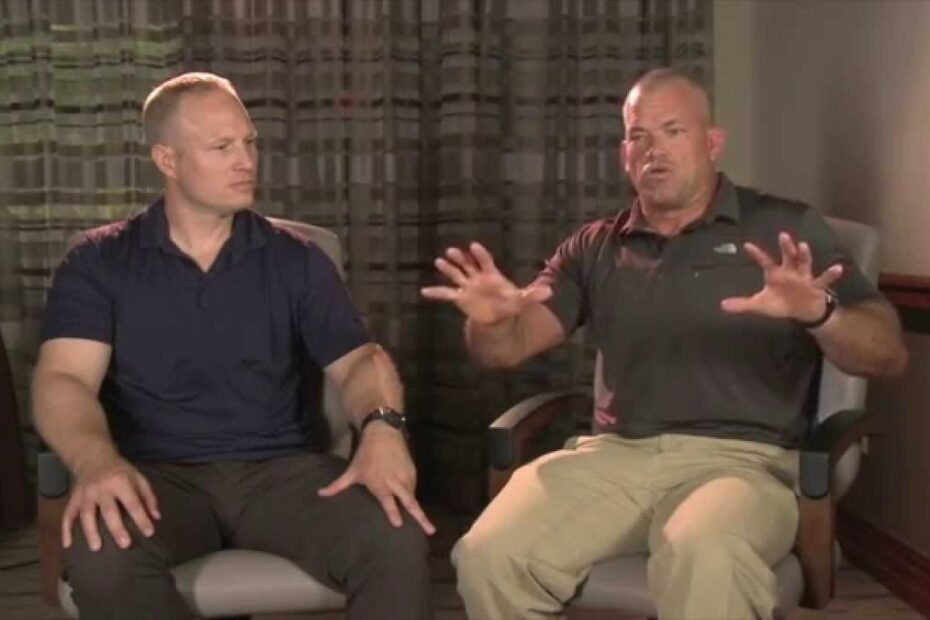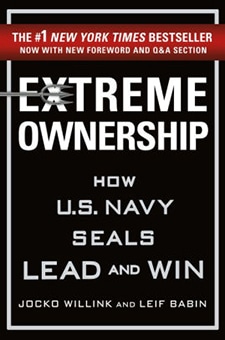Excerpt: Two Navy SEALs share their checklist for planning which they use for mission preparation… A checklist you can use for life planning too.
The following is an excerpt from Extreme Ownership: How Navy SEALS Lead and Win by Jocko Willink and Leif Babin. In it, Jocko and Leif share their checklist for planning which they use with their teams in Navy SEAL combat situations to ensure communication is clear, tasks have been appropriately delegated, efficiency is optimized, risks have been mitigated, and the plan with the greatest chance of success has been confidently selected.
While this formula is shared in the context of being for Navy SEALs who are immersed in life or death situations on a regular basis, it can certainly be adapted and utilized by leaders in all settings. Whether in combat, in a classroom, or in a conference room, having a checklist that is repeatable and well defined will ensure that leaders are thinking about and addressing all of the important elements that contribute to a mission’s overall success.
With each checklist item that is overlooked or skipped, the chance of optimal success for the leader and his/her team will continue to drop. Clear thoughts lead to clear actions. And clear actions lead to clear results. And when those results are clearly reflected upon, clear paths for growth can be identified and navigated. Without clarity, our thoughts, actions, results, and reflections will all be blurred.
To ensure the success for you and your team, start with this list, and make adaptations as you see fit. But as you might discover, if it works for the SEALs, it may work great for you, your team, and your ventures, as is. Good luck.
Enter Jocko Willink and Leif Babin (Page 204):
What’s the mission? Planning begins with mission analysis. Leaders must identify clear directives for the team. Once they themselves understand the mission, they can impart this knowledge to their key leaders and frontline troops tasked with executing the mission. A broad and ambiguous mission results in lack of focus, ineffective execution, and mission creep. To prevent this, the mission must be carefully refined and simplified so that it is explicitly clear and specifically focused to achieve the greater strategic vision for which that mission is a part.
The mission must explain the overall purpose and desired result, or “end state,” of the operation. The frontline troops tasked with executing the mission must understand the deeper purpose behind the mission. While a simple statement, the Commander’s Intent is actually the most important part of the brief. When understood by everyone involved in the execution of the plan, it guides each decision and action on the ground.
Different courses of action must be explored on how best to accomplish the mission—with the manpower, resources, and supporting assets available. Once a course of action is determined, further planning requires detailed information gathering in order to facilitate the development of a thorough plan. It is critical to utilize all assets and lean on the expertise of those in the best position to provide the most accurate and up-to-date information.
Leaders must delegate the planning process down the chain as much as possible to key subordinate leaders. Team leaders within the greater team and frontline, tactical-level leaders must have ownership of their tasks within the overall plan and mission. Team participation—even from the most junior personnel—is critical in developing bold, innovative solutions to problem sets. Giving the frontline troops ownership of even a small piece of the plan gives them buy-in, which helps them understand the reasons behind the plan, and better enables them to believe in the mission, which translates to far more effective implementation and execution on the ground.
While the senior leader supervises the entire planning process by team members, he or she must be careful not to get bogged down in the details. By maintaining a perspective above the microterrain of the plan, the senior leader can better ensure compliance with strategic objectives. Doing so enables senior leaders to “stand back and be the tactical genius”—to identify weaknesses or holes in the plan that those immersed in the details might have missed. This enables leaders to fill in those gaps before execution.
Once the detailed plan has been developed, it must then be briefed to the entire team and all participants and supporting elements. Leaders must carefully prioritize the information and be presented in as simple, clear, and concise a format as possible so that participants do not experience information overload. The planning process and briefing must be a forum that encourages discussion, questions, and clarification from even the most junior personnel. If frontline troops are unclear about the plan and yet are too intimidated to ask questions, the team’s ability to effectively execute the plan radically decreases. Thus, leaders must ask questions of their troops, encourage interaction, and ensure their teams understand the plan.
Following a successful brief, all members participating in an operation will understand the strategic mission, the Commander’s Intent, the specific mission of the team, and their individual roles within that mission. They will understand contingencies—likely challenges that might arise and how to respond. The test for a successful brief is simple: Do the team and the supporting elements understand it?
The plan must mitigate identified risks where possible. SEALs are known for taking significant risk, but in reality SEALs calculate risk very carefully. A good plan must enable the highest chance of mission success while mitigating as much risk as possible. There are some risks that simply cannot be mitigated, and leaders must instead focus on those risks that actually can be controlled. Detailed contingency plans help manage risk because everyone involved in the direct execution (or in support) of the operation understands what to do when obstacles arise or things go wrong. But whether on the battlefield or in the business world, leaders must be comfortable accepting some level of risk. As the U.S. Naval hero of the American Revolution and Father of the U.S. Navy, John Paul Jones, said: “Those who will not risk cannot win.”
The best teams employ constant analysis of their tactics and measure their effectiveness so that they can adapt their methods and implement lessons learned for future missions. Often business teams claim there isn’t time for such analysis. But one must make time. The best SEAL units, after each combat operation, conduct what we called a “post-operational debrief.” No matter how exhausted from an operation or how busy planning for the next mission, time is made for this debrief because lives and future mission success depend on it. A post-operational debrief examines all phases of an operation from planning through execution, in a concise format. It addresses the following for the combat mission just completed: What went right? What went wrong? How can we adapt our tactics to make us even more effective and increase our advantage over the enemy? Such self-examination allows SEAL units to reevaluate, enhance, and refine what worked and what didn’t so that they can constantly improve. It is critical for the success of any team in any business to do the same and implement those changes into their future plans so that they don’t repeat the same mistakes.
While businesses can have their own planning process, it must be standardized so that other departments within the company and supporting assets outside the company (such as service contractors or subsidiary companies) can understand and use the same format and terminology. It must be repeatable and guide users with a checklist of all the important things they need to think about. The plan must be briefed to the participants, geared toward the frontline troops charged with execution so they clearly understand it. Implementing such a planning process will ensure the highest level of performance and give the team the greatest chance to accomplish the mission and win.
A Navy SEAL’s Checklist for Planning (page 208):
- Analyze the mission
- Understand higher headquarters’ mission, Commander’s Intent, and endstate (the goal).
- Identify and state your own Commander’s Intent and endstate for the specific mission.
- Identify personnel, assets, resources, and time available.
- Decentralize the planning process.
- Empower key leaders within the team to analyze possible courses of action.
- Determine a specific course of action.
- Lean toward selecting the simplest course of action.
- Focus efforts on the best course of action.
- Empower key leaders to develop the plan for the selected course of action.
- Plan for likely contingencies through each phase of the operation.
- Mitigate risks that can be controlled as much as possible.
- Delegate portions of the plan and brief to key junior leaders.
- Stand back and be the tactical genius.
- Continually check and question the plan against emerging information to ensure it still fits the situation.
- Brief the plan to all participants and supporting assets.
- Emphasize Commander’s Intent.
- Ask questions and engage in discussion and interaction with the team to ensure they understand.
- Conduct post-operational debrief after execution.
- Analyze lessons learned and implement them in future planning.
If you enjoyed this excerpt on optimal planning for success from Leif Babin and Jocko Willink, you should definitely check out their book, Extreme Ownership below. It comes highly recommended :)
Are You Serious About Moving Forward in Your Life...? Our Guides Are For You. 👇🏼
The “Anti-Hustle, Habit Building” Guide

Exercise, eat healthier, meditate, journal, read more… You know the WHAT… This 30-Day Guide will (finally) show you the HOW… minus the hustle, minus the yo-yo-ing, minus the burnout, and definitely minus the need for NAVY Seal level self-discipline and/or grit…

Written by Matt Hogan
Founder of MoveMe Quotes. On a mission to help busy people do inner work—for better mental health; for healing; for personal growth. Find me on Twitter / IG / Medium. I also share daily insights here. 🌱
It has taken me 1,000’s of hours to build this free library for you. If it has helped you, you can support my continued effort here. ☕️






